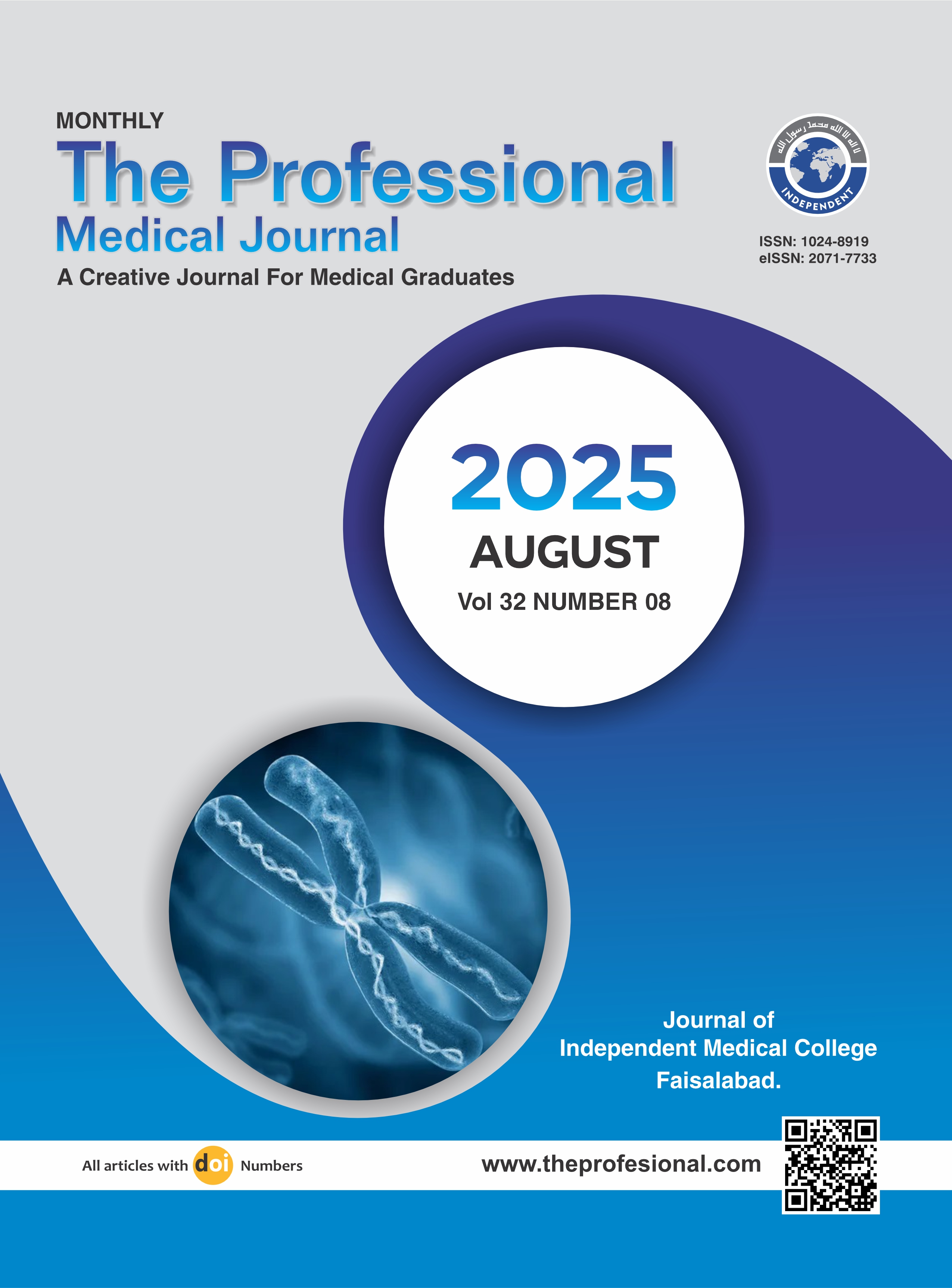Role of computed tomography angiography for the diagnosis of cerebral aneurysm in patients with atherosclerosis.
DOI:
https://doi.org/10.29309/TPMJ/2025.32.08.8841Keywords:
Aneurysm, Atherosclerosis, CT Angiography, Aneurysm Shape, Aneurysm Size, Ruptured AneurysmAbstract
Objective: To determine the role of CT Angiography for the Diagnosis of Cerebral Aneurysm types in Patients with Atherosclerosis. Study Design: Retrospective study. Setting: Chughtai Lab of Diagnostic Centre Jail Road, Lahore. Period: September 2024 to December 2024. Methods: In this study 44 patients who fulfilled the criteria, were taken, out of which 16(36.4%) were males and 28(63.6%) were females. Out of these 44 patients, 34(77.2%) were found to have cerebral aneurysms as detected on CTA. The important measurements included the shape and size of types of cerebral aneurysm. Results: The study concluded that CTA was found accurate in diagnosing and differentiating all the anatomical types of cerebral aneurysm and the ruptured aneurysms. The mean age of study participants is 56.68 ± 12.22 years with age range 37 to 80 years. In this study the aneurysms are categorized into small sized aneurysm (<5mm), medium sized aneurysm (5-10mm), large sized aneurysm (10-25mm) and giant aneurysm (>25mm). 19 patients (43.2%) had small size aneurysm, 11 patients (25%) had medium size aneurysm, 3 patients (6.8%) had large sized aneurysm and 1 patient (2.3%) had a giant aneurysm. In these 34 patients who had cerebral aneurysms, 12 patients (27.3%) had saccular aneurysm, 9 patients (20.5%) had fusiform aneurysm, 6 patients (13.6%) had dissecting aneurysm and 7 patients (15.9%) had ruptured irregular shaped aneurysms which means intracerebral bleeding is also detected in my study. Conclusion: Computed Tomography Angiography is the safe non-invasive diagnostic modality to detect all the morphologies of cerebral aneurysms. CTA can also detect the ruptured intracranial bleeding of an aneurysm which is less likely to be clearly seen on other modalities i.e. DSA.
Downloads
Published
Issue
Section
License
Copyright (c) 2025 The Professional Medical Journal

This work is licensed under a Creative Commons Attribution-NonCommercial 4.0 International License.


